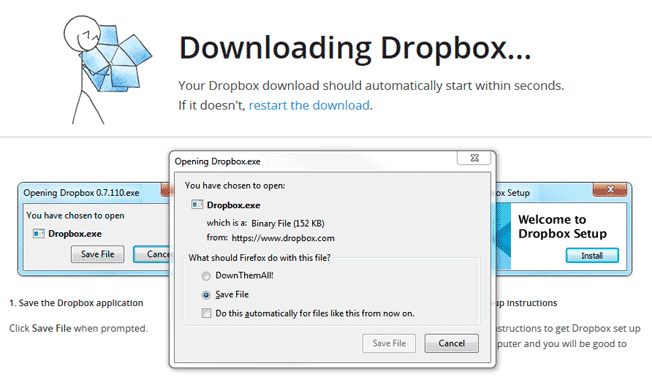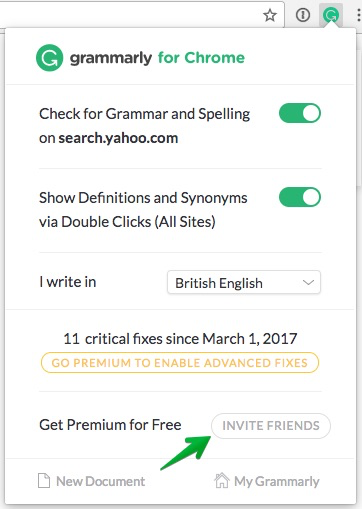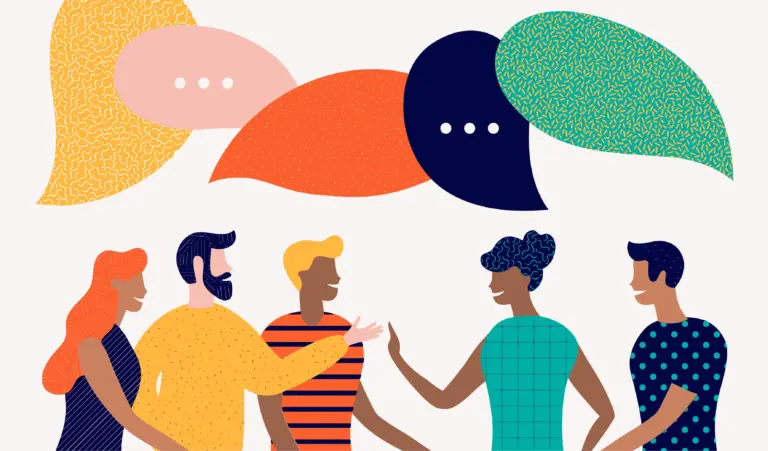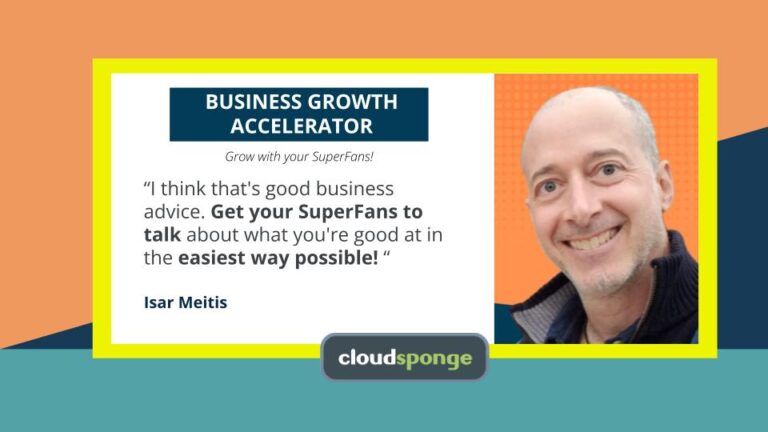Ever wondered how you could entice more users to invite their friends to your platform?
Get them to help you grow your userbase by introducing your company to their network of friends, family and colleagues?
Sure you have!
It’s the one thing you need right now to boost your platform’s growth.
It’s just that, as I’m sure you’ve already noticed, users aren’t that eager to tap into their contact lists, are they?
Lincoln Murphy outlined this behavior really well, saying (note, the emphasis in bold is mine):
“Unless you have specific intel indicating they will share your app with everyone immediately after first interacting with you (like, for instance, my Mom is your target audience), then you should probably assume they won’t.
And if you sell to a B2B Audience, you should double-down on that assumption.”
Luckily for you, in this guide, we’ll help you overcome this challenge.
In this post, you’ll:
- Learn everything there is about motivating users to send friend invitations,
- Discover how you could drive them to import their address books, and
- Find out ways to implement those insights to grow your platform.
Intrigued? Then let’s get right to it.
Jump to a section:
- Why You Must Discover Your Product’s Magical Moment to Grow
- Why Enticing Invitations In Smaller, Closed Communities Poses Such A Challenge
- How Users Decide Whether to Send Friend Invitations
- The “Friend Invitation” Validation Process
- The Most Common Objections for Inviting Friends
- How to Optimize the Friend Invitation Process for the Network-Centric Products
- Bonus: Getting Even More Invitations. Suggestions For A/B Tests To Fine Tune The Friend Invitation Process
Skip the Queue - Download our DIY Better Sharing Workbook today!
Fact: If You Seek Viral Growth, You First Must Get New Users to Discover The Magical Moment of Your Product
I’m sure you’ll agree with me on this:
Getting new users to sign up for a product, service or a new platform is actually quite easy.
Of course, it takes an effort to drive people to your website, and come up with a compelling offer that would entice signups for trial or free accounts.
But it’s getting them to stick around, become customers and pay you… that’s the real challenge, isn’t it?

And to get hooked on your product, service or platform, new users must reach what Alex Schultz, the Facebook’s VP of Growth refers to as, a magical moment.
It’s the moment, according to Schultz, when the user realizes:
“Aha! So that’s what this product can do for me.”
In other words, users need to realize that you can deliver the value you promised.
For Facebook, that magical moment is seeing friends on the platform. As Schultz explains (quoted via Kissmetrics) (again, the emphasis in bold is mine):
“I’ve talked to so many companies, and they try to get incredibly complicated about what they’re doing, but it is just as simple as when you see the first picture of one of your friends on Facebook, you go ‘Oh my God, this is what this site is about!’ Zuckerberg talked at Y Combinator about getting people to 10 friends in 14 days; that is why we focus on this metric.”
For Twitter, the magical moment is seeing initial updates in your timeline. And for that reason, the company requires any new user to follow at least 5 accounts before they even see what the service is about.
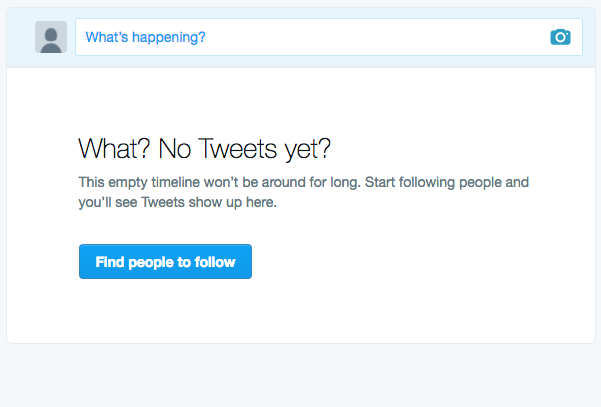
Dropbox asks users to download the desktop client, so they could immediately take advantage of the product’s core functionality – easy and effortless access to cloud storage.
Shopify gets new users to open their store before they even set up their account. Minutes after signing up, any budding e-commerce entrepreneur finds themselves already with a working online store in front of them.
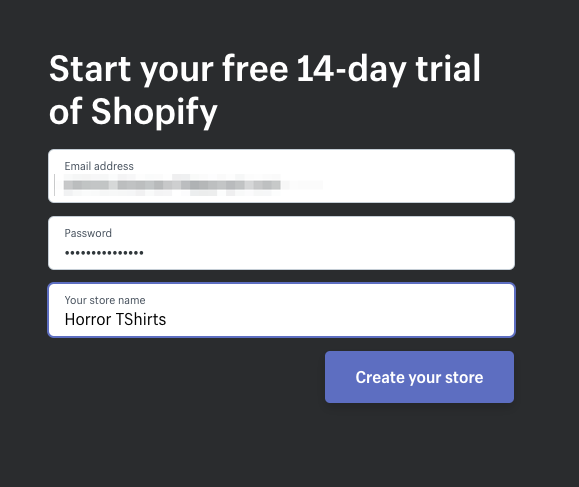
Helping a new customer to reach the activation point means that they will understand the benefit of using your product or service, and realize the value of becoming a customer.
But activation is just one of the objectives of targeting the magical moment.
Boosting growth is another.
You see, for many products, particularly small, private networks and communities, the magical moment will only occur if users discover their friends or connections there.
It’s almost as if every new user thought to themselves:
“If only my friends were here, this platform would be better for me.”
And needless to say, when those users begin inviting the people they know to the platform, your growth propels.
Your product becomes viral, reaching new potential users without any involvement on your part, additional marketing spend, and effort.
The problem?
As we’ve already discussed, not every customer is willing to tap into their address book and invite friends to join them on a new platform.
And this is particularly true if you’re trying to boost virality of a platform that targets a smaller, “closed” audience.
But why enticing invitations in smaller, closed communities poses such a challenge?
This goes without saying, doesn’t it?
We have a strong need to belong.
In their 2015 research paper titled, “Sense of belonging to local community in small-to-medium sized Canadian urban areas,” Peter Kitchen, Allison Williams and Melissa Gallina wrote:
“Sense of belonging is recognized as an important determinant of psychological and physical well-being.”
And to satisfy that need, we cling to communities. From small, local hobby-based groups, various industry organizations, to worldwide networks, we identify with and cling to like minded people.
David W. McWilliam and David M. Chavis called this behavior “The Sense of Community,” which they characterized by the following statement (quoted after David Spinks):
“Sense of community is a feeling that members have of belonging, a feeling that members matter to one another and to the group, and a shared faith that members’ needs will be met through their commitment to be together.”
And according to the two researchers, we belong to:
- Share the sense of personal relatedness,
- Matter and have influence on other people,
- Fulfill our needs to belong,
- Share the emotional connection with other members.
But just like all those elements fulfill our basic need to be a part of a community, they may also prevent us from helping it grow.
If asked why we share or refer products or services, the most common reason is that of the value we’ve received ourselves.
As Jaimie Field writes:
“Referrals represent a measure of the value that the person who is offering the referral puts on the service or product.”
But that behavior is also closely related to the risk of inviting or recommending a service, product or platform to others.
If that risk is small, customers won’t hesitate to recommend.
However, if they consider the risk as greater, then they’ll most likely think twice before sending an invitation.
Just think about it, if your goal is to build a strong relationship with a group of people, share an emotional connection, and become an influence, how likely are you to bring another person on board?
Particularly, if you haven’t had the chance to achieve any of your goals within the community yet.
As Seth Godin put it:
“More than features, more than benefits, we are driven to become a member in good standing of the tribe. We want to be respected by those we aspire to connect with, we want to know what we ought to do to be part of that circle.”
Research cited by the New York Times, also confirms this theory, naming the following elements that motivate us to share and recommend:
- Relationship building – 78%,
- Involvement – 69%,
- Identity building – 68%
But let’s look at how this works in practice.
Imagine you’ve just joined a new platform, and have hardly any influence or deep connection with the group.
Nobody knows you too, and you’re still going through the process of establishing your identity there.
And as a result, you fear the ridicule by bringing someone who actually might not fit in.
Naturally, in those circumstances, you’re far less likely to invite other people to the platform.
Let me quote Lincoln Murphy again on this issue:
“People are actually LESS likely (my own observations) in a B2B setting to do things they know could make them look stupid. And if they aren’t sure how something is going to make them look – good or bad – guess what? They’re going to err on the side of caution.”
The trouble is that at the same time, many platforms are only useful if you use them with friends and connections.

Take Prefer, for example. This new platform helps users find any professionals they need through friend recommendations.
The usefulness of the tool is without any doubt:
Using existing relationships, it allows you to solve any nagging problems you have, from finding a babysitter to hiring a new accountant for your business.
And the key to the platform’s success lies in the phrase “existing relationships.”
As Scott Belsky writes over at Medium about Prefer:
“[…] the professionals that come into our homes, take care of our families, and are privy to our personal lives and finances — these people are trusted relationships, not nameless dots and algorithms.”
And so, the sheer existence of the network depends not just on users signing up but importing their address books, filled with professionals they could recommend to others.
But as we’ve discussed already, getting users to tap into their contacts is a challenge.
So, in the following sections, we’ll help you understand and implement the mechanism to entice users to invite friends to a new network.
And so, to begin at the beginning:
How Users Decide Whether to Send Friend Invitations
As the study reported by the New York Times proved it, sharing is innate (cited after RJmetrics)
It’s a behavior deeply rooted in our human nature.
And one that manifests itself in our consumer behavior too. Just consider these stats:
- 94% of us make sure to share things that are useful.
- And 49% of customers want to tell others about products or services they care about.
But before customers jump in to recommend or invite someone to a new platform, they typically go through a lengthy process that helps them assess whether the referral is a viable option for them.
This process focuses on assessing the level of risk associated with the invitation, as well as the potential for receiving a positive response from either side, the invitee and the group you’re inviting them to.
And needless to say, your viral growth relies heavily on your ability to overcome this process.
Encourage more users to share about you,
Learn how to with The Better Sharing Workbook.
The “Friend Invitation” Validation Process
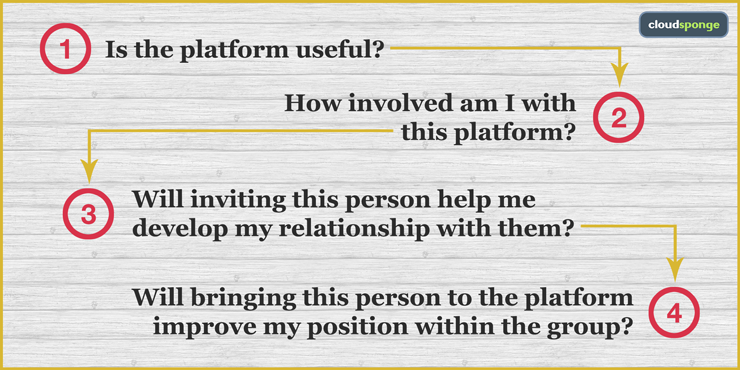
Question 1: Is the product/platform useful?
Since a customer has only joined your platform, they’re validating it for themselves. And the potential friend invitation relies heavily on how useful they’re going to find it.
This is where your onboarding process comes into play.
You need to ensure that new users will quickly realize the magical moment. Or at least understand the importance of bringing in a couple of friends to the platform to fully avail of the benefits it offers.
Question 2: How involved am I with this platform?
According to the NYT, involvement is the 3rd most common reason for sharing or referrals.
Therefore, naturally, new users will assess how involved they are with your platform.
And naturally, the higher the involvement, the greater the chance for them to send a friend invitation.
Question 3: Will inviting this person help me develop my relationship with them?
Think about it. What are the chances of a friend thinking poorly of you if they didn’t enjoy food in a restaurant you recommended?
Pretty slim, right?
But a lawyer you recommended losing their case might put a serious strain on your relationship.
That’s a dilemma, anyone, considering making a recommendation or invitation faces:
Will the invitation help strengthen or damage the relationship?
(Further, in this guide, we’ll show you some strategies that would help you overcome it.)
Question 4: Will bringing this person to the platform improve my position within the group?
We’ve already discussed how our psychological need to belong affects our behavior within a community.
And so, it should come as no surprise that many customers will consider how good a referral will make them look in the group.
As Andy Cockburn points:
“[…] social capital is the absolute key to successful referral campaigns. If you can generate confidence in the imminent and inevitable social reward of making a recommendation your customer will be won over.”
It is your role to reinforce (in the copy, and calls to action) the social rewards for helping grow the network.
(Don’t worry if you don’t know how to do this. We cover this in-depth later in this guide.)
The Most Common Objections for Inviting Friends
Apart from the four questions above, your users will also experience objections preventing them from sending that friend an invitation.
For the most part, your users will voice the following reservations:
- “I don’t want to be spamming my friends.”
- “I’m afraid that the platform or product won’t live up to the expectations, and my friends will think poorly of me.”
- “I don’t want to look like someone who easily shares my friends’ contact details with anyone. Privacy is a serious issue for my friends.”
- “I’m not sure what my friends will think of me after I’ve recommended this platform to them.”
And the majority of your friend invitation process should revolve around matching the friend invitation validation process as well as overcoming the following objections.
Here’s how.
How to Optimize the Friend Invitation Process for the Network-Centric Products
Idea #1. Optimize the Timing
Fact: Requesting new users to invite new friends right after signup makes so much sense for many products.
Take Facebook for example. We’ve already discussed what happens when a new users sees 10 of her friends on the platform.
Similarly, anyone would most likely feel much better about exploring a new private network, if they knew at least some people there.
But for many other products, it may make more sense to hold off on the request, at least until a person has had the time to discover the value of the product for themselves.
You see, unless inviting friends to the network brings a person closer to the activation point, it may make more sense to experiment with introducing the option to import the address book only when a person has engaged with the product, understands its value, and has developed a trust in you.
Now, don’t get me wrong. You don’t have to hold off. Nextdoor, a private social network for neighborhoods thrives on instant friend invitations. (And you can read how friend invitations help them grow in this case study).
But depending on your setup, your product might benefit more from presenting users with the friend invitation request at a later stage.
Optimise your referral interface to get more referrals,
Download The Better Sharing Workbook.
Idea #2. Present Social Proof to Overcome Social Capital Objections
Often, to drive more invitations, you need to convince users that it is safe for them to do so.
We’ve talked about this behavior earlier on when discussing the invitation validation process and user objections that prevent them from sending friend invitations.
You already know that two questions they’re going to raise are:
- “Is the platform useful?”
- “What if the platform or product won’t live up to the expectations, and my friends will think poorly of me?”
And an effective way to overcome those is by showing the success others have had with the platform.
How? By presenting them with strong-enough social proof.
Because you see, although we believe we make decisions on our own, much of what we think or do is influenced by the behavior of other people around us.
Countless conformity experiments have proved that when unsure what to do, we conform to the behavior of others.
And that’s even if it puts our lives in danger!
Here, take a look at the smoke-filled room study below:
Unbelievable, isn’t it?
But of course, you don’t have to push your users to the extreme.
You can overcome their objections by showcasing simple proof of successes others have had with your product or platform. For example:
You could place press mentions inside your platform or on its website, perhaps somewhere close to the invitation option. Here’s how Prefer does it:

Include quotes and testimonials from satisfied users or members:
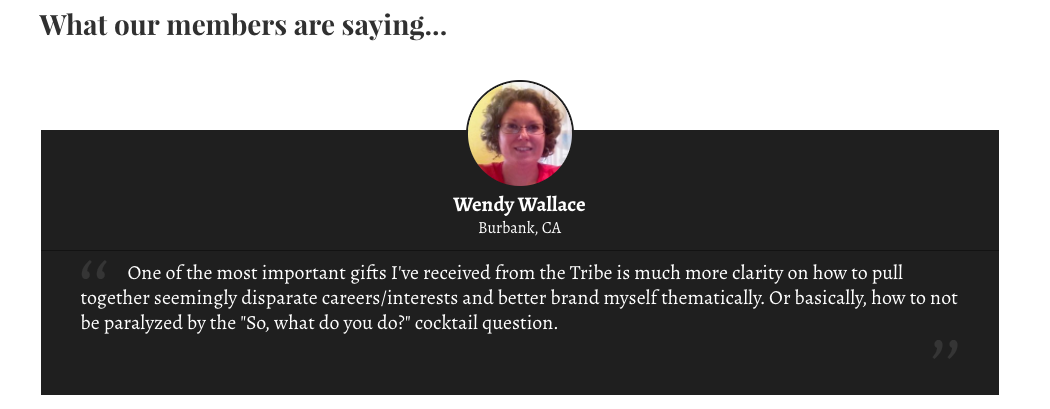
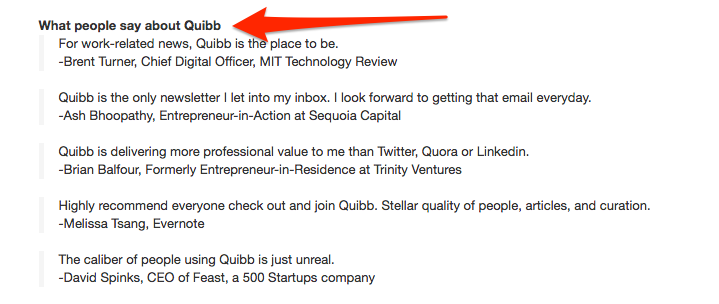
Include or feature experts or personalities your network would consider an authority. Inbound.org, a social platform for marketers, includes images from renowned marketing experts – Rand Fishkin, Dharmesh Shah, and Aleyda Solis, on their homepage.
(And it doesn’t really matter that two of those people are the platform’s founders. Seeing their pictures is often enough to convince people to take action – in this case, sign up to the site.)
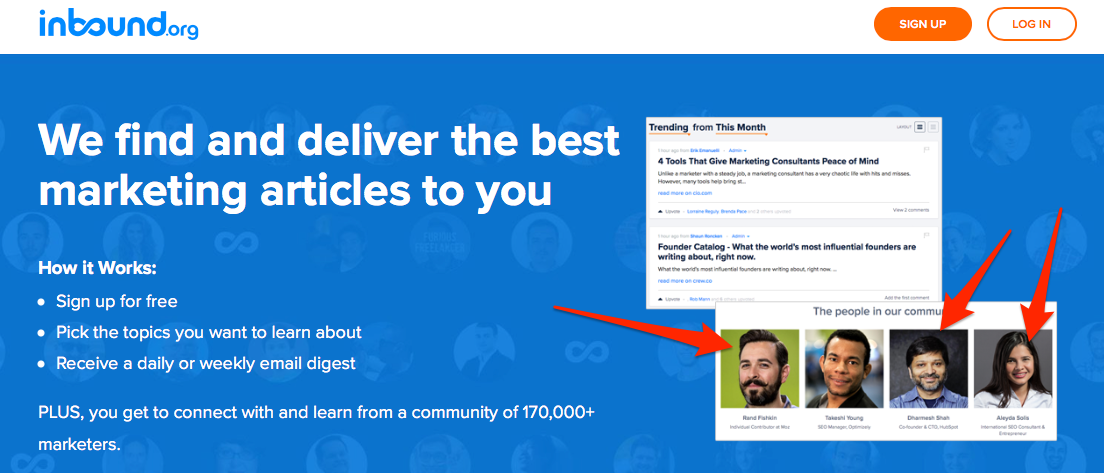
Show key statistics, like the number of satisfied users, retention, Net Promoter Score, etc.
Another strategy is to use numbers to highlight your platform’s popularity by displaying relevant metrics, such as the number of users, their satisfaction score, etc.
Idea #3. Use Compelling Copy to Reinforce Their Decision to Invite Friends
It’s no secret that just as social proof can provide the final reason to perform certain actions, it’s the copy that entices us even to consider taking them.
Copywriters know how to use language to evoke a specific emotional reaction from the audience, engage them, and inspire to act.
And the text you display when requesting users to invite friends is no different.
Using the right words and phrases could help you convince the user that:
- Their friends will actually love being on the platform,
- They won’t mind an invitation. In fact, they’ll be quite happy to join them,
- And might even get impressed by you already being there.
But I admit, writing engaging copy is by far, the most difficult element of the entire process.
Assigning the friend invitation request to the right place in the onboarding cycle or finding the right social proof are relatively simple, compared to having to write powerful copy that compels users to action.
So allow me to offer you some suggestions as to how to do it:
Start by researching your customer’s objections for sending friend invitations. We’ve covered a lot of them already in this guide. But you may want to conduct some additional research to uncover the strongest objection among your customers.
Target that objection in the headline. As David Ogilvy, one of the greatest copywriters of all time said:
On the average, five times as many people read the headline as read the body copy. When you have written your headline, you have spent eighty cents out of your dollar.
And here’s why:
The headline is the very first thing a person sees.
And it’s also the element that convinces them to even pay attention to the rest of the page.
Although writing headlines is by far, the most difficult element of copywriting, there are templates and formulas you could use.
Target their emotion. In his amazing book, Persuasive Copywriting, Andy Maslen points out the two elements of a successful copy:
- Steady state – Describes emotion the audience has towards the problem right now.
- Target emotion – Describes how you want them to feel after reading the text.
Identifying those two helps you write copy that will connect with your users emotionally.
But how do you use this strategy when convincing users to invite friends to the network?
Let me illustrate this with a quick example. Let’s pretend that you identified worry as the steady state. Your audience feels anxious about the new network, on which most likely they have no friends with them.
Your headline could refer that emotion, i.e. “Too quiet for you here?” And then, use bullet points underneath to overcome their objection for inviting friends over.
Explain why they should invite friends. Be open as to why they should bring their friends over to the new platform.
The best writing device to achieve this are bullet points. In fact, if you look at the majority of successful landing pages, they all employ this strategy in some form:
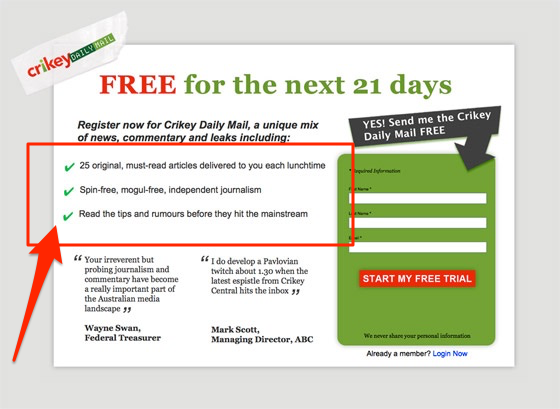
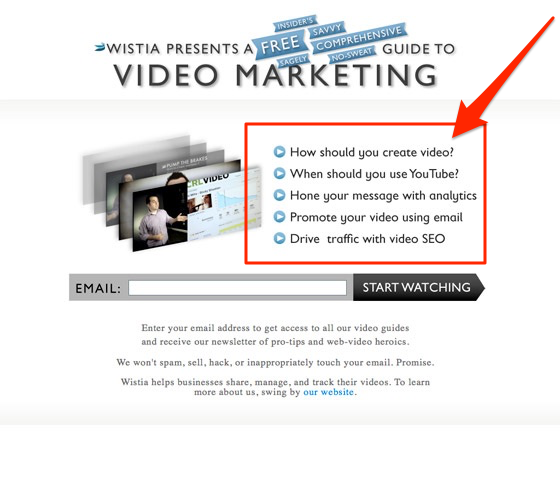
Give your audience a compelling reason to send invitations.
Did you know that “because” is one of the most powerful words in the English language?
Why? Because giving people a reason for making a request results in a significantly greater compliance.
That’s what Ellen Langer, the Professor of Psychology at Harvard discovered in her famous “Xerox Experiment.” (I won’t bother you with the experiment’s details here. But if you’re interested in how the word “because” compelled more people to take action, read the full overview of the study here.)
And so, often, telling users why they should invite others might entice them actually to do so.
Here’s how Nextdoor uses this strategy in their invitation process. Note the use of “because” in the copy. Nextdoor asks you to send an invitation because they’ve set a clear goal for your neighborhood (in this case, Upper Hastings Ranch – 1000 members). Even though, a user might not be aware of the significance of that goal, the sheer reason alone is sufficient for them to act on the request:
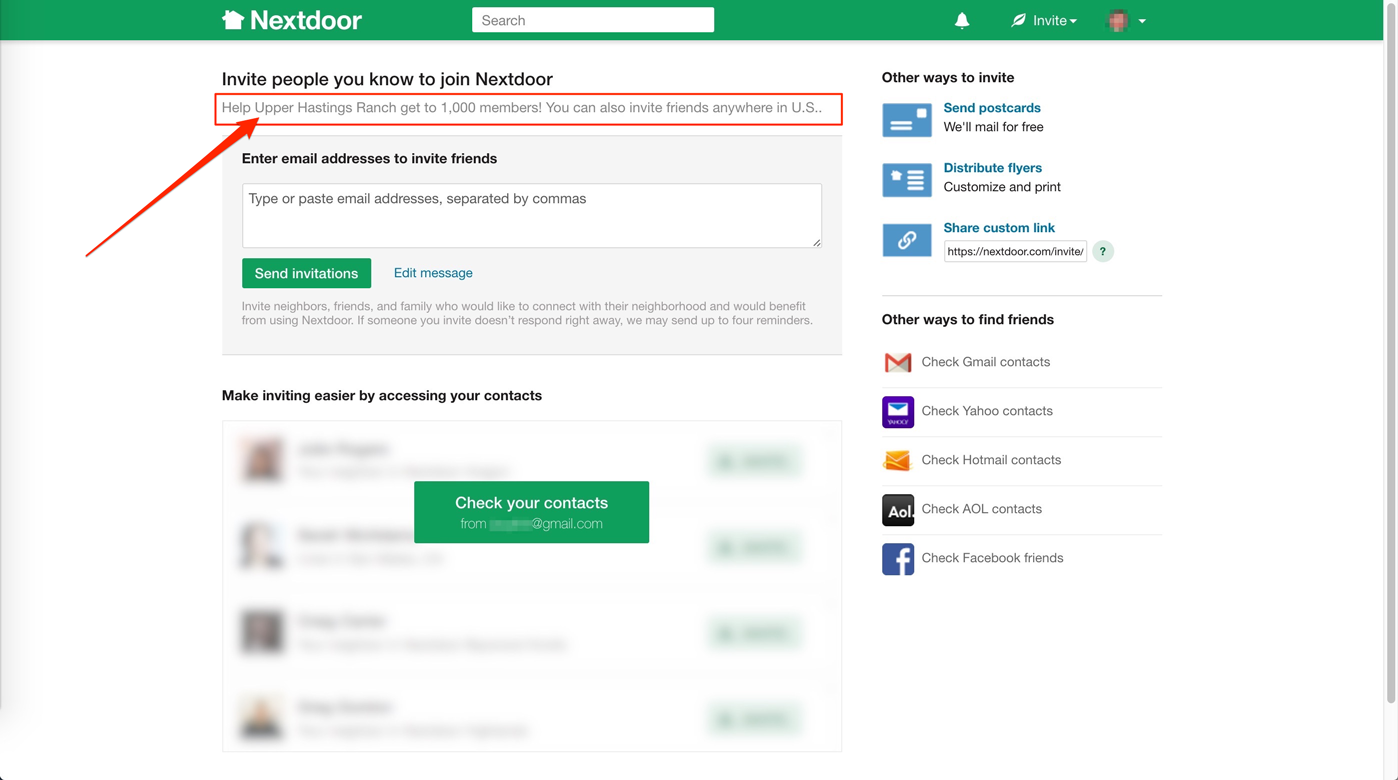
Bonus: Getting even more invitations. Suggestions for A/B tests to fine tune the friend invitation process.
There’s a particular misconception in marketing that drives me crazy.
It says that you need to get your growth strategy, regardless of what it is, right the first time.
Far from it.
In fact, it’s extremely difficult to get the invitation process right for the first time.
(And sure, you could get lucky. But personally, I wouldn’t bet on this too much when setting up any growth strategy.)
For that reason, you should continuously test different variations of your strategy to discover what engages users the most.
And in this final section, I want to offer you a couple of suggestion for tests you could conduct to improve your user invitation process.
Placement
Fact: Where you place the invitation option matters just as much as the copy you feature on it.
After all, users are only likely to avail of it if they notice it first.
So, test with different placements. For example, move the option to the main navigation:

Make it more prominent in the settings:
Or use a popup, a slide-in or even a full landing page:
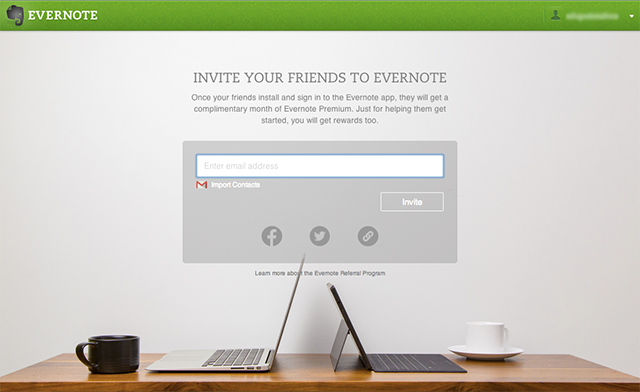
Headline
We’ve already discussed the importance of the headline. And so, if you’re looking to boost your invitation rate, this would be the first place to test.
Testing headlines mean using various styles for the copy to see which one engages the audience the most. And some of the styles to consider include:
- Asking a question
- Using a strong action verb
- Targeting a pain point
- Outlining the benefits of inviting friends
Benefits
There are two ways you can display the benefits of sending friend invitations – as paragraphs and bullet points.
And you should test how your users respond to either of them to discover the most engaging option.
Call to Action
Call to action (CTA) is the second most important element of the invitation process, after the headline.
It tells a person what specifically you want them to do. And there are a number of CTAs you could test:
- Change the text to see what verbs compel the audience to act (i.e. “invite your friends here” vs. “get your friends here” vs. “send the invitation” vs. “invite friends now”)
- Change the size or color of the call to action button to make it more prominent
- Test using hyperlinks instead of buttons
- Add an explanation to the call to action to make it more enticing. For example:
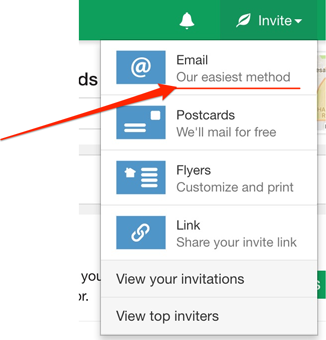
Closing Thoughts
Fact: Getting users to sign up for a trial or demo account is actually quite easy.
Enticing them to help your product to grow, particularly by spreading the word and inviting their friends…that’s the real challenge.
Hopefully, after reading this guide, you have a much better idea on how users decide to send friend invitations, and what strategies would help you compel more of them to do so.
Next Steps
Next, find out how one platform uses friend invitations to grow their user base. Read the case study now.
Excited to get started?
Download our Better Sharing Workbook Now
(it's quick, easy and absolutely free!)

